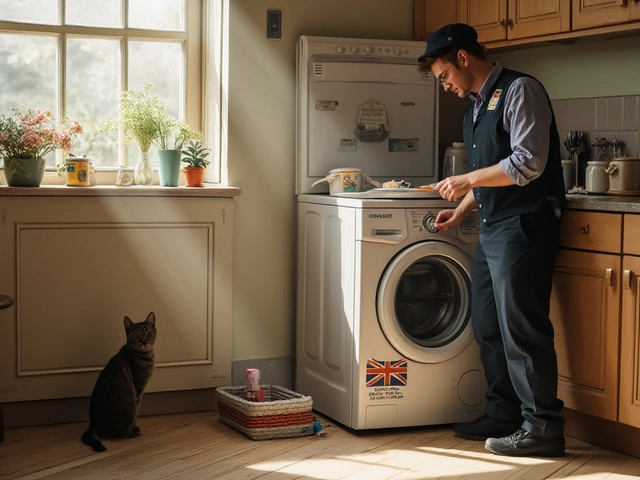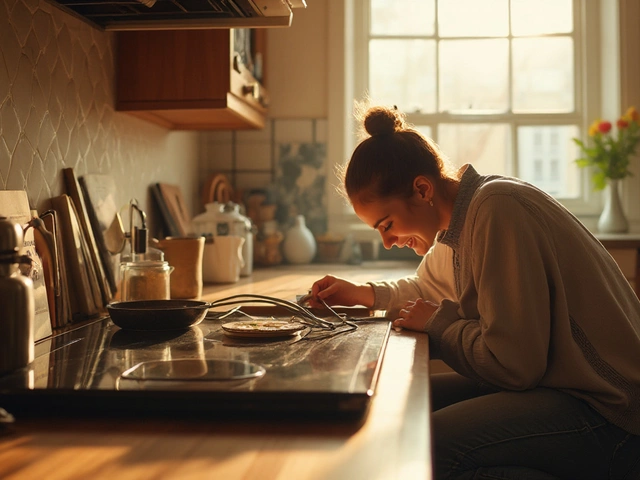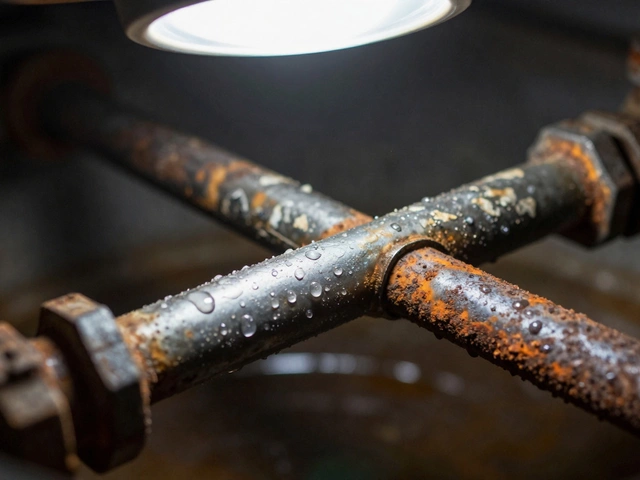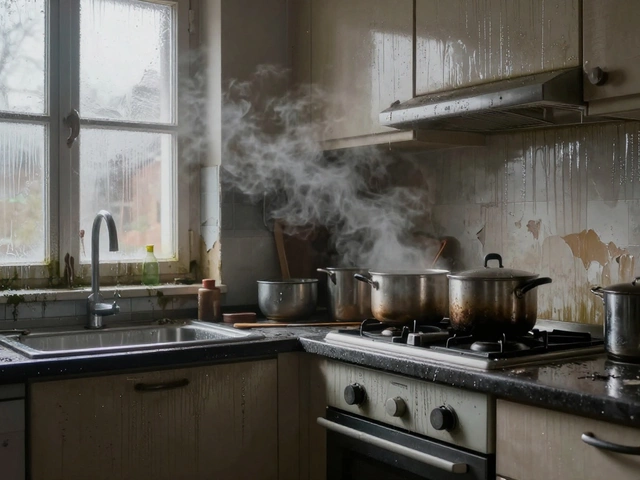Having your electric hob suddenly stop working can be frustrating, especially when you're in the midst of cooking a meal. Before you panic and reach for the phone to call in a professional, there are a few steps you can take on your own to troubleshoot the issue.
Sometimes, the problem might be as simple as a loose plug or a tripped circuit breaker. Understanding what could be causing the malfunction can not only save you money but also give you some peace of mind. With a bit of guidance, you can usually trace the issue to something that can easily be fixed right at home.
Knowing how to safely surface the problem and apply the appropriate solutions is key. Settle in as we dive into the common problems electric hobs face, and prepare to get your appliance back up and running without a hitch.
- Checking the Power Supply
- Inspecting the Control Panel & Elements
- Safety Precautions
- Common Problems and Solutions
- When to Call a Professional
Checking the Power Supply
The first and most elementary step in troubleshooting your electric hob is to ensure it’s receiving power. Sounds simple, right? Yet, a surprising number of electric hob troubles arise from power supply issues. Start by inspecting whether the hob is properly plugged. In many kitchens, disconnecting an appliance accidentally isn’t uncommon, especially if the socket is shared with other devices. Give the plug a firm push to ensure it’s seated tightly. A loose connection won’t let proper current flow, thus causing your hob to underperform or not work at all.
Next, turn your attention to the circuit breaker. The breaker could have tripped, cutting power to the hob. Visit your fuse box, often tucked away in a utility space or basement, and see if a switch has flipped. Restoring a breaker can be as simple as flipping it back on. But remember, if it keeps tripping, you may have a deeper issue, possibly with wiring that should be assessed by a professional.
Don’t overlook the possibility of a blown fuse – older homes, especially, might still operate under fuse systems. Locate the fuse corresponding to your kitchen and inspect it for signs of wear or burn. Replacement fuses are generally inexpensive, but they do require a bit of know-how. Ensuring you have the right amperage is key; otherwise, you could risk damaging your appliance or, worse, start a fire.
"Electrical safety should never be overlooked. As Benjamin Franklin famously quoted, 'An ounce of prevention is worth a pound of cure.' Ensuring power supply issues are resolved can save you from bigger appliance problems down the line."
Consider using a different power outlet to rule out electrical issues within the socket itself. Move your electric hob or use an extension cord to plug into a different outlet. If it starts without a hitch on this new source, your initial socket may need repair. Always remember electrical work can be hazardous, don’t hesitate to seek professional input if unsure.
If all these essentials are intact and the hob remains unresponsive, a more serious problem might be lurking under the surface. At this juncture, examining internal components would require the keen hands of an electrician who understands the complex circuitry that keeps your kitchen appliances humming. Once again, knowing when to step back and call in expert help can't be overstated when it comes to potentially hazardous electric work.
Inspecting the Control Panel & Elements
When you're dealing with a malfunctioning electric hob, the control panel and the cooking elements inside it are frequent culprits in causing the issue. It's vital that you start with the basics; understanding these components can save you a lot of trouble. The control panel is basically the hob's brain, and if it's out of whack, the hob won't perform as expected. Begin by examining this area closely. Given that it's a front-facing element, it can often bear the brunt of spills and knocks, which might lead to connectivity issues internally. When every button press feels unresponsive, or the digital display appears erratic, it may indicate a need for closer inspection.
First, ensure that the hob is safely turned off and unplugged to avoid any risks. Carefully remove the panel to observe any signs of obvious damage or loose connections. Wires that connect the controls to the hob's heating elements may also be loose. Reconnecting or tightening these can sometimes resolve what might seem like a significant issue initially. Don't be hasty in assuming major failure; these components, though robust, can sometimes just need a bit of attention. An overlooked factor is residue buildup—if you’ve recently cooked something that might have splattered or boiled over, it's worth ensuring no residues linger on the panel, affecting its function.
Elements Under the Glass: A Closer Look
Next, let's delve into the actual heating elements themselves. These are under that beautiful glass top you see every day. It's not just style over substance; the design serves the greater function of directing heat precisely to your pots and pans. If these elements aren't performing, it could either be an electrical failure or a burn-out. Visual cues like discolored spots on the glass can sometimes hint where heat hasn't been distributed properly. It's helpful to check if the elements beneath are receiving power. Use a multimeter if available, to verify that each element is getting the electrical juice it needs to function. Occasionally, these elements may need replacement, a common task for those who've had their hobs a while.
Let's not forget to stress that understanding even these technical aspects doesn't necessarily require a technician instantly. “Most issues can be traced back to basic connectivity problems,” says Alex Hargreaves, a seasoned appliance service technician, via
"Common fixes range from rewiring a stubborn connector to replacing a burnt-out element. It's amazing how a little upkeep goes a long way."Addressing these spots of failure proactively is key. Be it a matter of faulty wiring or broken elements, a careful inspection can illuminate problems before they become a severe malfunction.
Add a regular check schedule into your kitchen maintenance routine. It helps to catch minor issues before they turn into more significant problems. Remember, it's not just about fixing a problem when it occurs, but maintaining your appliance's longevity. Always refer to the manufacturer's guide when handling elements and anything under the hood of your electric hob. Keeping these tips in mind will help ensure that your cooking adventures are uninterrupted, letting you enjoy a functional kitchen space.
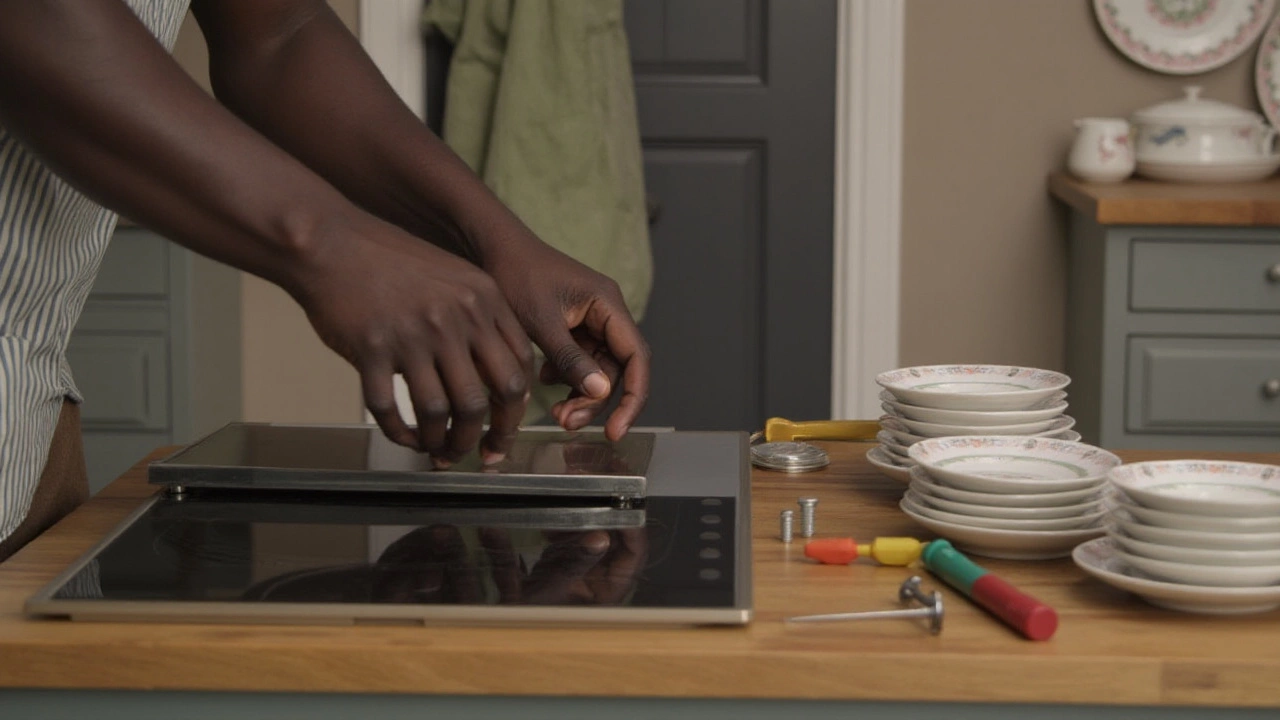
Safety Precautions
When delving into the intricacies of repairing a malfunctioning electric hob, observing safety precautions is of paramount importance. Working with electricity presents inherent risks that call for careful attention and preparation. Before attempting any kind of inspection or repair, make sure your hob is completely powered off. This includes disconnecting it from the power source and, ideally, switching off the related circuit breaker to eliminate any chance of an electrical shock. Safety first, as they say.
It's not just the electric current that poses a risk; other elements of your appliance can be dangerous as well. For one, the heating elements can retain heat long after they've been turned off. Ensure they're fully cooled before touching or inspecting them, to avoid burns or other heat-related injuries. Those glossy surfaces might look tempting to the touch, but they can betray no sign of the scorching temperature beneath. Keeping this in mind could really save you from an unexpected ouch moment.
Even when the power is off, the delicate components within the hob, such as wired connectors and sensitive electronic parts, should be handled with care. Avoid using metal tools that can easily cause shorts or damage to these fragile parts. Instead, opt for insulated screwdrivers and other tools designed to work safely with electrical appliances. These can make all the difference between a safe, successful repair and a costly mistake that leads to further repairs or even replacement of the entire unit.
You are as safe as your tools. Just as a chef needs sharp, quality knives, a home repairer needs reliable, insulated tools.
Don’t underestimate the potential for gas leaks if your hob shares an area with gas ovens or stoves. In such cases, it might be prudent to enlist a professional, especially if you suspect any smell of gas. Remember that safety is always worth the extra cost, and dealing with gas can quickly complicate what might seem like simple troubleshooting tasks. Make sure your kitchen is well-ventilated before beginning any troubleshooting, which mitigates the risk of gas accumulation.
If you're ever in doubt, it's wise to stop and consider your next step. Tavelling down the wrong path with repairs can lead to unfortunate outcomes, so prioritizing your safety is crucial. Always ensure you're wearing protective gear, like gloves and safety goggles, which can help prevent specific injuries when dealing with tiny, fiddly parts or potential sparks. A little foresight and patience can go a long way toward ensuring your repair efforts are both safe and successful.
Common Problems and Solutions
Electric hobs are one of those kitchen appliances that tend to work seamlessly until they don't. When they stop performing, identifying the exact cause can be challenging if you're not familiar with the inner workings. A few typical issues, however, resurface time and again, giving us some clues as to where the problem might lie. A very first step would be to identify when the hob stopped working. Was it during a specific course of action, or did it simply not switch on one day? Such insights could be key to addressing the malfunction.
Common Problem 1: Power Connection Issues
Electrical hobs depend entirely on consistent, stable power. Once the power supply fails, your hob might appear non-responsive. First, make sure your hob is securely plugged into the outlet. It may sound obvious, but often, simple cord disconnections cause a problem. Then, check your circuit breaker or fuse box; a tripped breaker can be re-enabled with a simple flick of a switch. Sometimes, when multiple appliances are running simultaneously, the circuit gets overloaded. It's worth nothing that leaks and spills can occasionally trip the breaker as well. Electric hob units are sensitive to such disruptions, and ensuring the area around the hob is dry can prevent these unnecessary restarts.
Common Problem 2: Broken Heating Elements
When your hob’s burners heat unevenly or not at all, you may be dealing with broken or faulty heating elements. Electric hobs rely on these elements to generate the heat necessary for cooking. Feeling the burners gently after they've been on for a moment can indicate if heat is being conveyed properly. Look for any visible damages such as bubbles, burns, or breaks in the element. Replacements are typically available from any home appliance store and can be swapped with a bit of care. Safety is paramount, so always make sure you disconnect the power before attempting any repairs on these components.
Common Problem 3: Faulty Control Knobs or Touchpads
The control panel is where most of that user interaction happens. Often, the knobs or digital controls can become unresponsive due to wear and tear. For traditional knob-controlled hobs, grime build-up under the knobs might be the issue. Remove them if possible, and clean the connections with a soft, damp cloth. For electric hob models with digital touch panels, a glitch or misbehavior can sometimes be reset by powering the unit off completely and back on again. Sometimes systems simply need a reboot just like our electronic devices.
"In the complex world of electric appliances, the easy fixes are often the key to immediate relief." - HomeTech Magazine
Common Problem 4: Temperature Inconsistencies
Many hob users face the dilemma of inconsistent heating. In such cases, it is critical to ensure you're using the right cookware. Different materials conduct heat differently, and using recommended flat-bottomed, suitable cookware can significantly impact performance. If the inconsistency persists, the thermostat might need calibration or replacement. Thermostats play a crucial role in regulating your cooking temperature, and faulty thermostats often manifest in unreliable heat distribution. It may be worth consulting your manufacturer’s guide or seeking professional help if thermostat issues are suspected.
| Issue | Potential Solution |
|---|---|
| Power Issues | Check outlets, reset circuit breaker |
| Faulty Elements | Inspect and replace damaged elements |
| Control Problems | Clean or reset knobs/touchpads |
| Temperature Inconsistencies | Ensure proper cookware, check thermostat |
By familiarizing yourself with the common problems associated with electric hobs, you are not only extending the life of your appliance but also building the confidence to tackle minor issues. Remember, safety should always come first, and when in doubt, consulting a professional is the best way forward.

When to Call a Professional
You’ve gone through all the troubleshooting steps, reset the switches, and even given your electric hob a thorough once-over, yet the problem persists. Sometimes, the issues with electric hobs are deeper than a simple fix-at-home solution. Knowing when to call in a professional is as crucial as knowing your way around your kitchen. Professionals have the experience and tools necessary for diagnosing and fixing what may be hidden beneath the surface. This might include complex electrical issues that could pose a danger if handled improperly.
If you've noticed that the hob won’t turn on despite ensuring the proper installation and power supply checks, then a professional’s input is required. Electrical components, over time, can degrade or become faulty; these instances benefit from expert intervention. Even the best troubleshooting guides can’t prepare you for certain complexities, such as a faulty internal circuit or malfunctioning sensors. Electrical hobs are sophisticated appliances, and tinkering beyond a certain point could exacerbate the issue, causing additional damage or even voiding any warranty that might still be in effect. Additionally, if you detect a burnt smell or visual signs of smoke from the unit, it is advisable to switch off the power immediately and contact a technician.
As expert electrician Mark Waters from The Trusted Electricians Network states, "Whenever you face a persistent electrical problem that basic troubleshooting doesn't resolve, it’s critical to prioritize safety and consult a professional. Most home devices are not designed for deep interventions by untrained individuals."
Another scenario which necessitates a professional's touch involves issues with the digital display, if your hob features one, and you're experiencing error messages or complete screen failure. In many cases, these require recalibration or component replacement that only a trained technician should perform. In addition, non-responsive touch controls or selectors are typically signs of internal issues that need specific expertise. Electric hobs often integrate sensitive controls that only respond well to precise and knowledgeable adjustments. If your hob frequently trips the circuit breaker despite having checked the power ratings and potential overloads, a skilled electrician can trace the problem effectively.
Consider the overall cost of repeated failed repairs at home; the investment in a professional could be more cost-efficient in the long term. Not only does this ensure that your hob is safe to use, but it also helps streamline its efficiency and longevity. Also, if you've recently moved houses and noticed the hob isn’t functioning as it should, it might be improperly set up according to different regional electrical standards; leave this to the experts. Trusting a professional allows you to enjoy the peace of mind that comes from knowing your kitchen appliance is under the best care.



